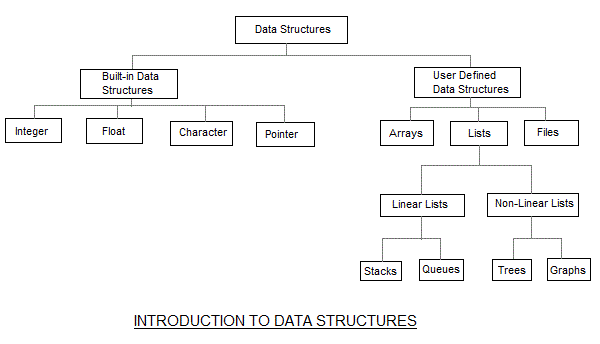Introduction to Data Structures and Algorithms
Structures allow us to perform different operations on data. We select these data structures based on which type of operation is required. We will look into these data structures in more details in our later lessons.

The data structures can also be classified on the basis of the following characteristics:
| Characteristic | Description |
|---|---|
| Linear | In Linear data structures, the data items are arranged in a linear sequence. Example: Array |
| Non-Linear | In Non-Linear data structures, the data items are not in sequence. Example: Tree, Graph |
| Homogeneous | In homogeneous data structures, all the elements are of the same type. Example: Array |
| Non-Homogeneous | In the Non-Homogeneous data structure, the elements may or may not be of the same type. Example: Structures |
| Static | data structures are those whose sizes and structures associated memory locations are fixed, at compile time. Example: Array |
| Dynamic | Dynamic structures are those which expands or shrinks depending upon the program need and its execution. Also, their associated memory locations changes. Example: Linked List created using pointers |

0 comments:
Post a Comment